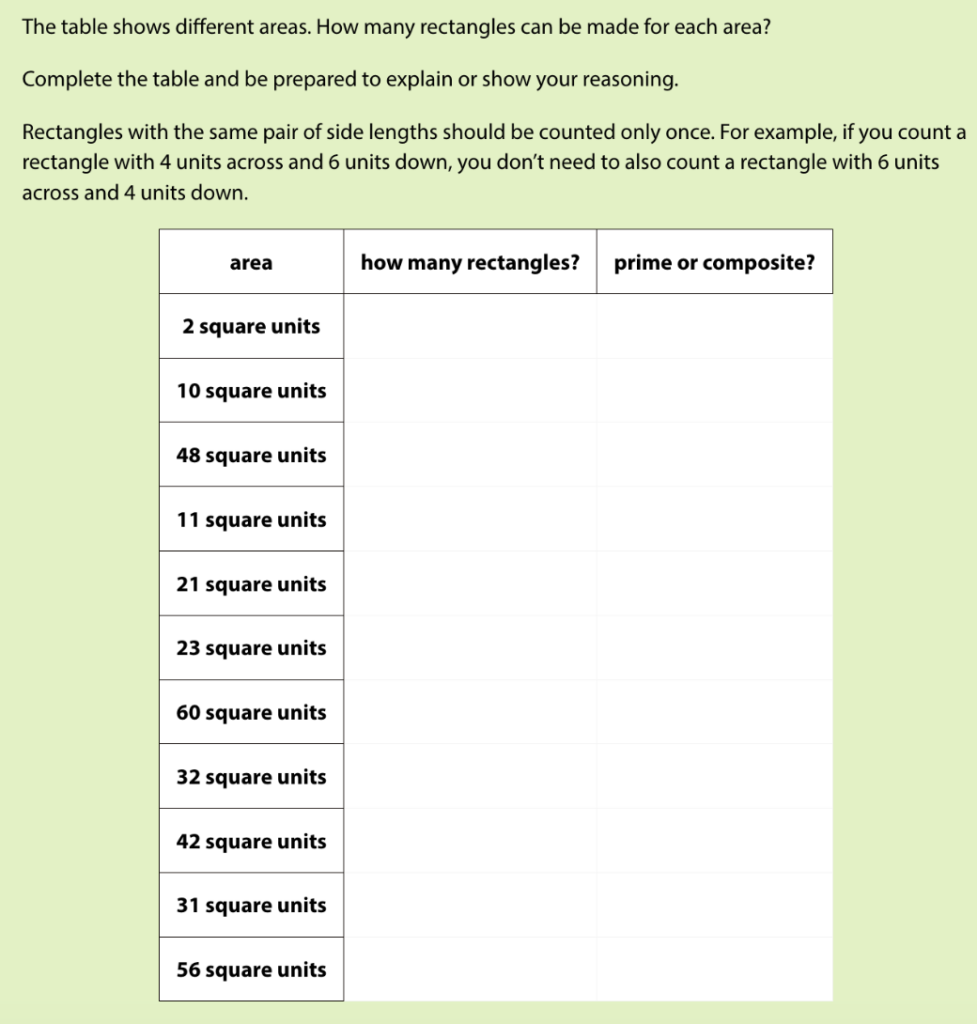By Eric Partridge, IM Certified® Facilitator
I don’t have many memories from elementary school. The one memory I have from elementary math is from playing Around the World. The object of this game was to answer a multiplication fact faster than your opponent. The teacher would pose a multiplication equation to a pair of students, one standing next to their seated classmate. The student who said the correct answer first moved on to the next seated classmate. The goal was to make it around the “world” without having to sit down – to beat all your classmates in a multiplication fact.
Math came easily to me as a student, and I had the capacity and support at home to memorize my facts. I was also fast at recalling them, so I enjoyed Around the World. It didn’t hurt that I was loud and could be heard over a classmate saying their answer nearly simultaneously with me. My biggest worry was that 8×7 would come up, or 8×6 – those were the hardest for me to memorize. Oh, and Chris Fallon. If I was second best in the class at Around the World, he was clearly first. It was a rare and celebratory occasion if I managed to get past him.
More than 20 years later, these are my memories of elementary school math as a student: that it was about speed and it was about competition. The narrative of math being about speed is common, but in my experience, the narrative about competition receives less attention. There isn’t anything necessarily wrong with competition in math (or other school subjects), but there are some trends and consequences related to math being positioned as competition.
Games like Around the World implicitly, yet clearly, communicate who is good at mathematics and who is not. Students, even those in the early elementary years, are incredibly perceptive to issues of status within the classroom. Even when math groups are named by colors or by shapes, students know which groups are perceived to be good at math. The strong messages about ability that students receive in school often follow them into adulthood, solidifying into a negative math identity.
Competition within the classroom has implications for access to higher level math courses and success with mathematics. Students who receive messages that they are not good at math lose self-efficacy and motivation to continue with mathematics. This disproportionately impacts girls in upper level math courses or pursuing postsecondary degrees in mathematics and Black and Brown students spanning all educational levels.
Rather than a competition, math can be positioned as a collaboration. Rather than speed and answers, math can be about working together and building off one another’s ideas. Because, while answers are important, they are not the math.
There are several ways in which the Illustrative Mathematics curriculum (IM K-12 Math) can help foster math as a collaboration. Across grade levels, the curriculum intentionally begins each year by establishing mathematical community in the classroom. An IM blog post, “Helping Elementary Students Cultivate a Strong Math Community,” focuses on mathematical community in the elementary grades. In the first lesson of Unit 1, teachers list out student-generated ideas for Doing Math and Norms for both teachers and students to help establish how both are responsible for fostering classroom community in math.
Additionally, the problem-based lesson structure used throughout IM K-12 Math is structured around collaborative learning opportunities for students. There are consistent opportunities for students to work in pairs or groups on activities while the teacher circulates and asks questions. In Grade 4, Unit 1, Lesson 3, for example, students work in partners to determine how many rectangles they can make with a particular area. Activity 2 from this lesson is shown below.

Grade 4, Unit 1, Lesson 3, Activity 2
For a contrast in grade level and content, in Grade 1, Unit 7, Lesson 2, Activity 2, students work in groups of four to construct cubes out of other shapes. The directions from the teacher guide for this activity are below.

Grade 1, Unit 7, Lesson 2, Activity 2
These activities have explicit opportunities for students to collaborate, and these sorts of structures are common within IM lessons.
Another lesson feature that helps foster collaboration is that each activity includes multiple correct answers. In the Grade 4 lesson, for example, while there is one correct answer for how many rectangles can be made with an area of 60 square units, multiple students can contribute to the discussion by identifying rectangles with different dimensions. In the Grade 1 lesson, there are several ways that a cube can be built from other shapes. Activities with multiple correct answers support collaboration because they allow multiple students to contribute and be correct, which communicates the value in other students’ thinking and contributions.
In addition to the collaborative embedded features in IM K-12 Math, teachers can make moves to emphasize or highlight collaboration in their classrooms. In the Grade 4 lesson, partners are tasked with determining how many rectangles can be made that have each of 11 different areas. Knowing that the curriculum allots 20 minutes for this activity, which may not be enough time for all partners to figure out the number of rectangles for all 11 areas, a teacher could intentionally assign areas to particular pairs when launching the activity (e.g., pair A finds rectangles with areas of 2, 10, and 48 square units; pair B finds rectangles with areas of 11, 21, and 23 square units, etc.). Then, during the Activity Synthesis, pairs responsible for each area could share out.
This highlights multiple important points related to collaboration. First, there is practical accountability to the class community – your classmates are counting on you and your partner to report back on how many rectangles you found. Second, there is the implicit communication that all students in the class have important mathematical ideas to contribute – no one student or handful of students will carry the lesson themselves. And finally, this allows for the teacher to explicitly elevate collaboration and the math community – for example, by working together and relying on our classmate’s ideas, we were better able to solve this problem.
Next Steps
Math can be positioned as collaborative rather than competitive through both the structures in IM K-12 Math and also the moves teachers make. An emphasis on collaboration can support all students seeing both themselves and their classmates as competent sensemakers and powerful mathematicians, and can prevent strong memories of their version of Chris Fallon twenty years later.
With that in mind, I leave you with four questions to reflect upon:
- What ways, if any, is math collaborative in your setting?
- What ways could math be (more) collaborative?
- What features of the IM curriculum can support these collaboration goals?
- What ways might you, or teachers you work with, highlight collaboration within and beyond the curriculum?
